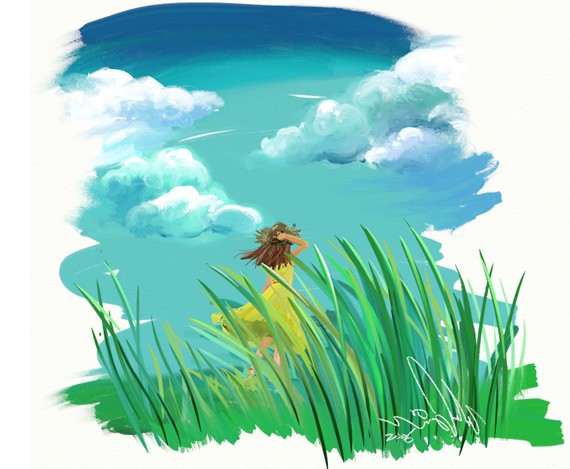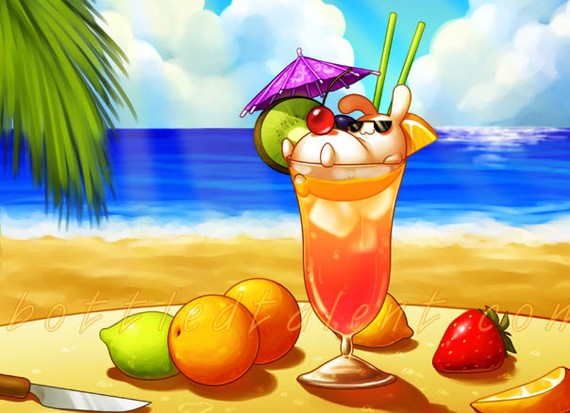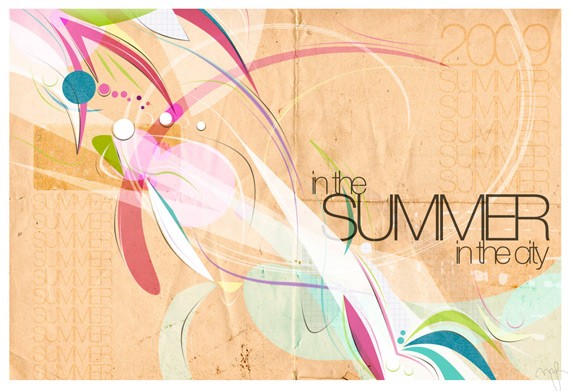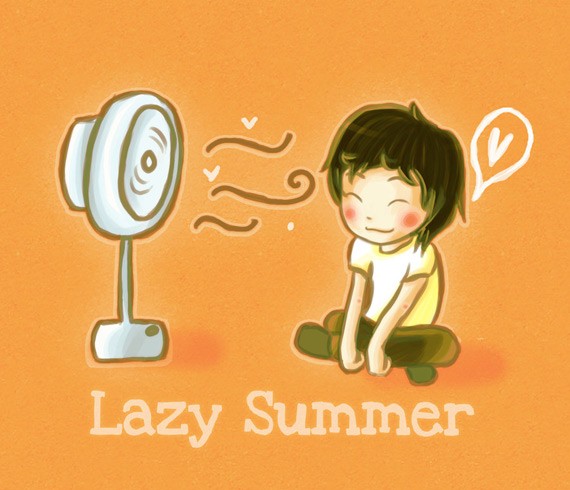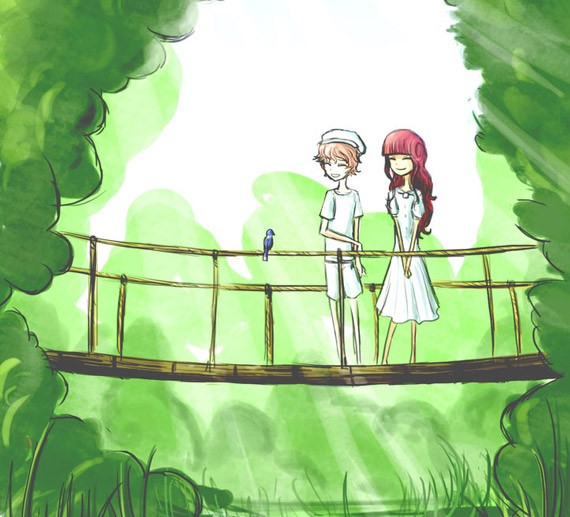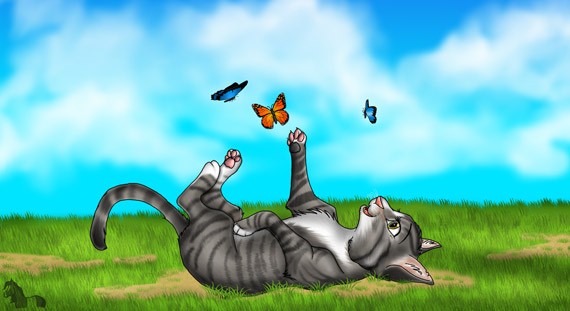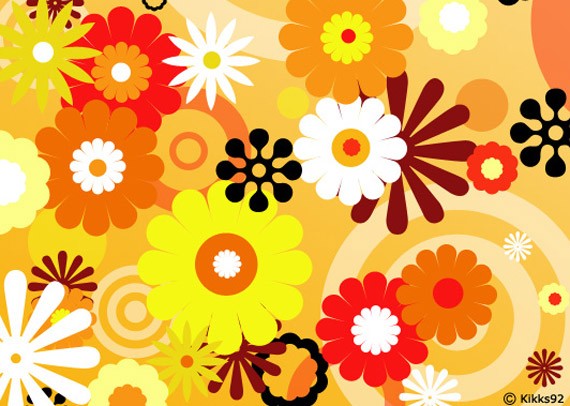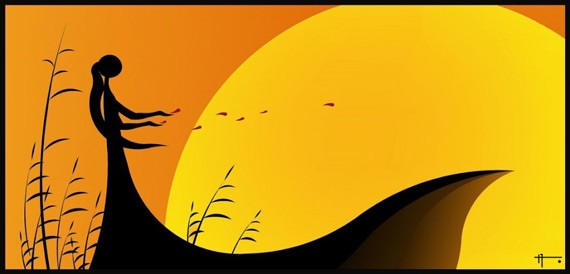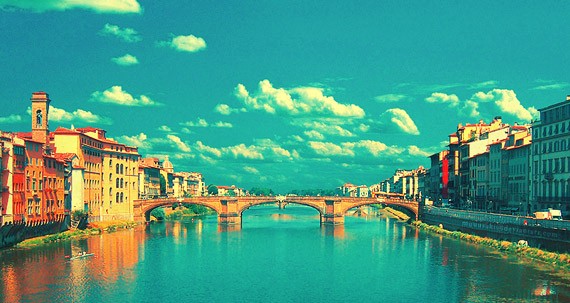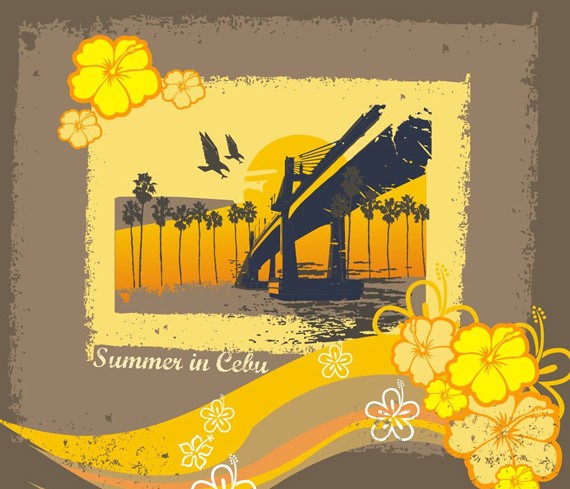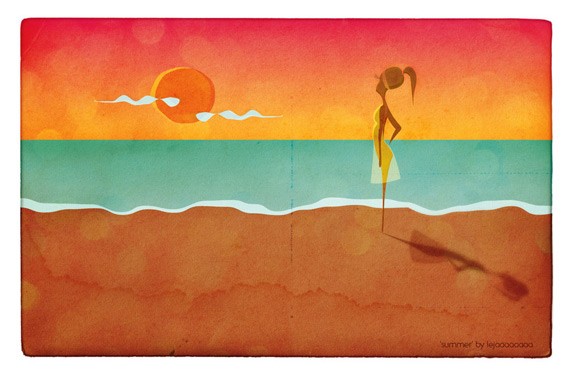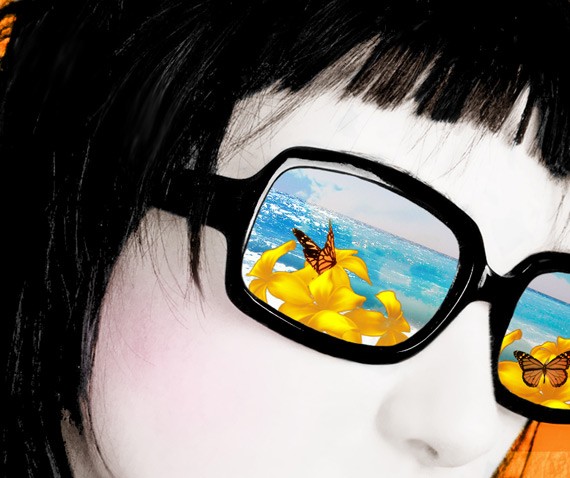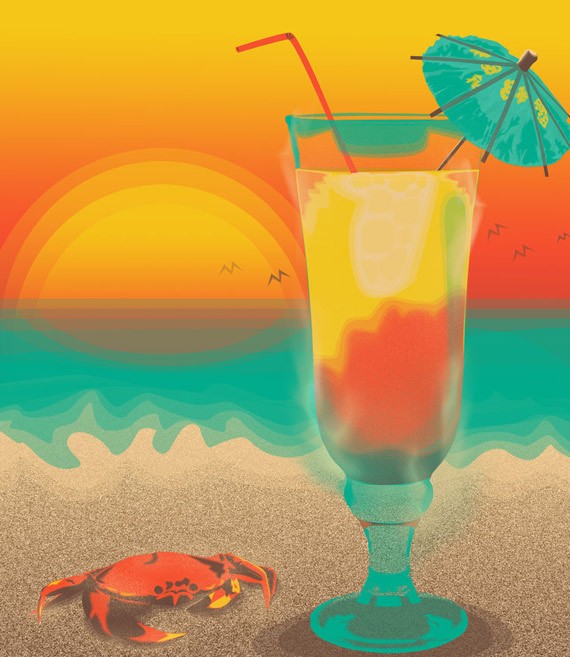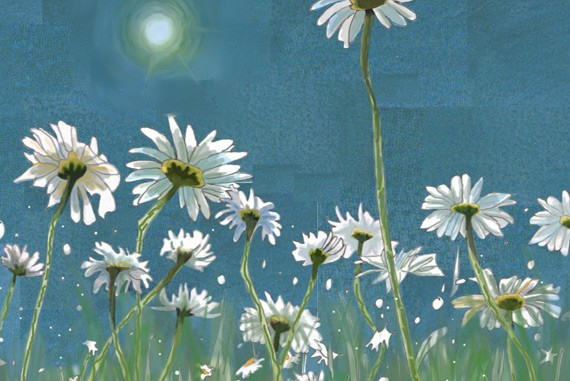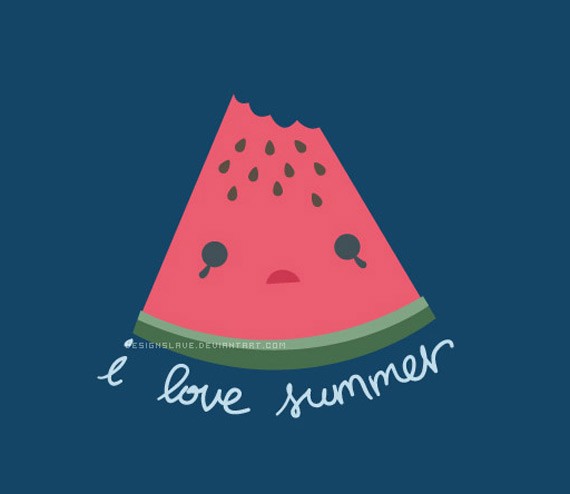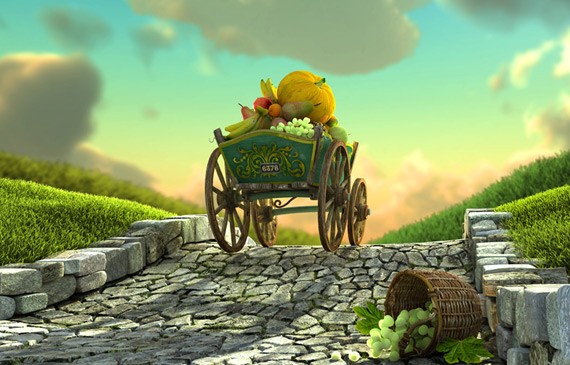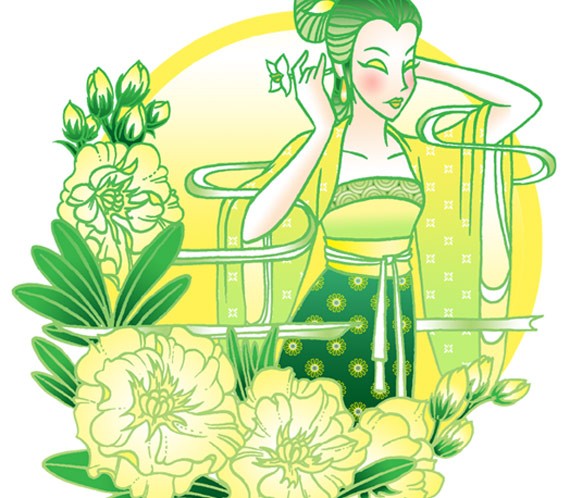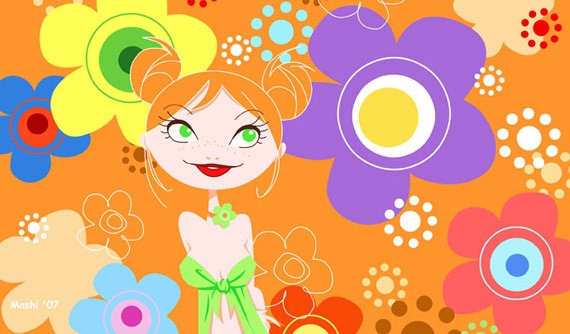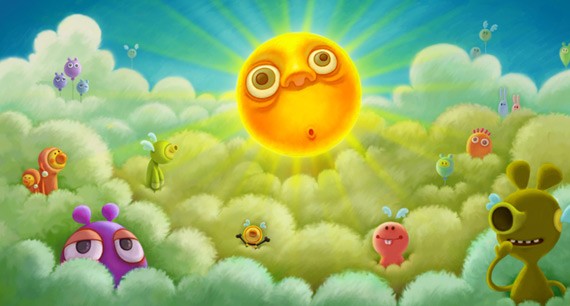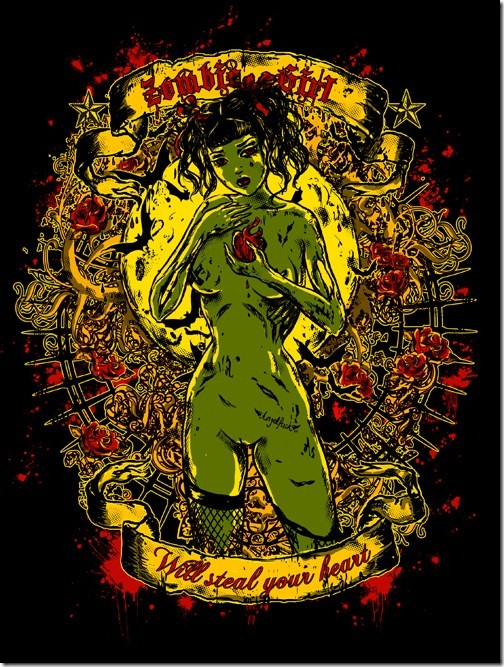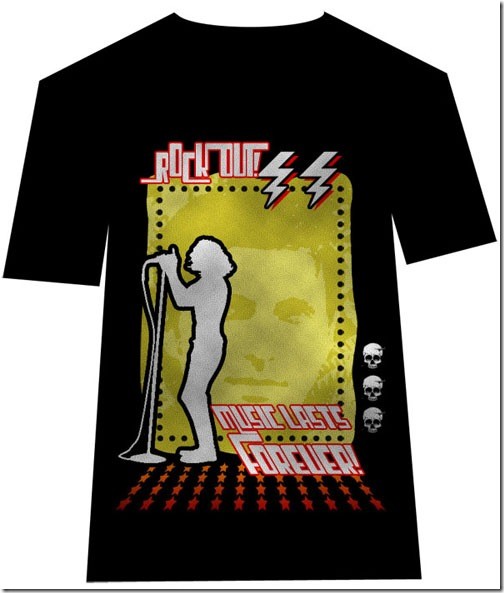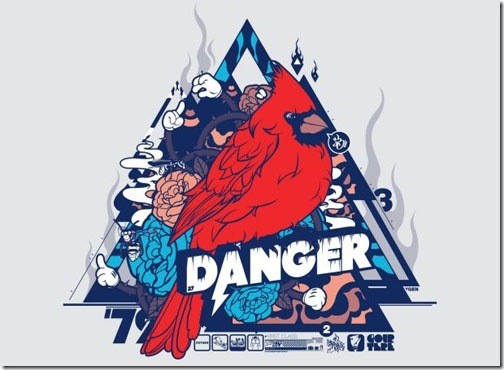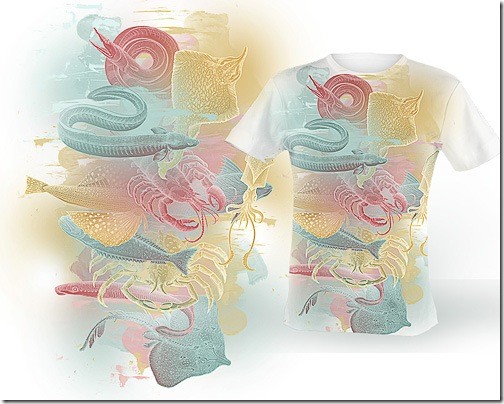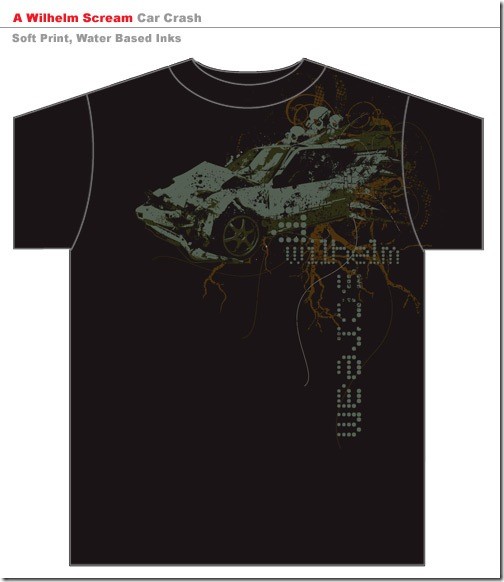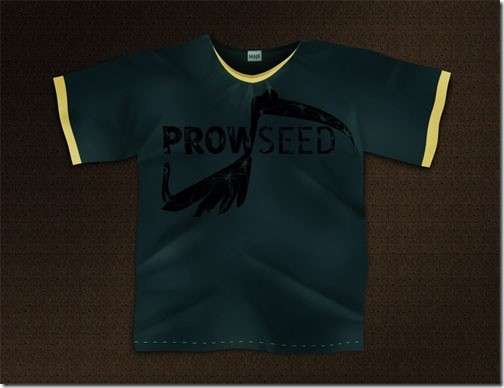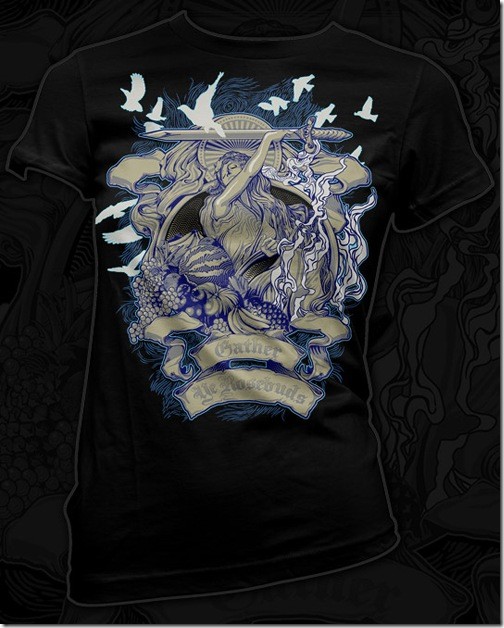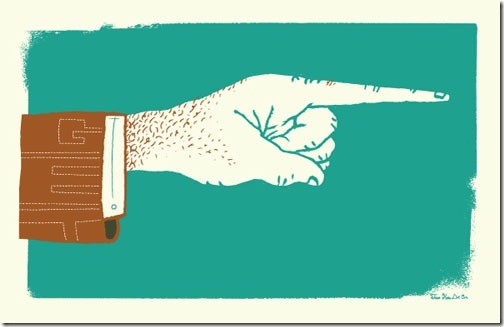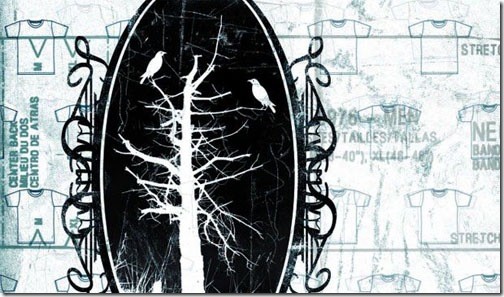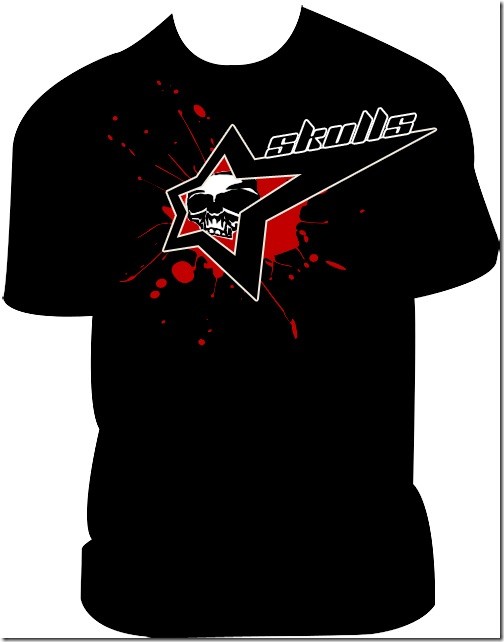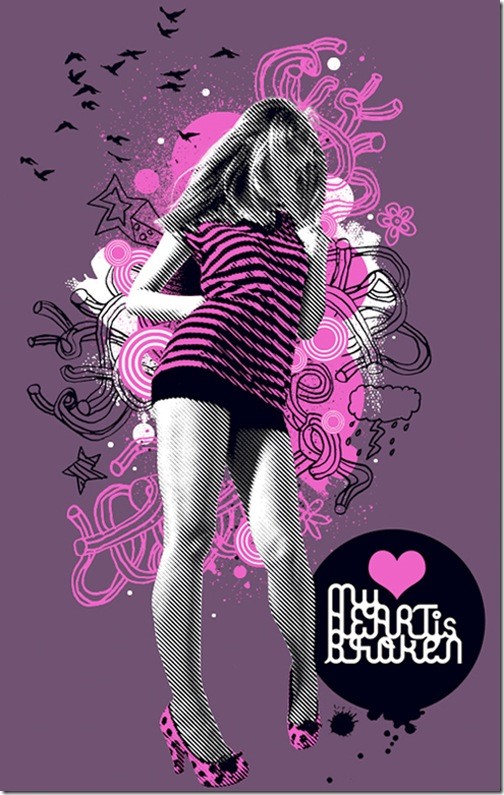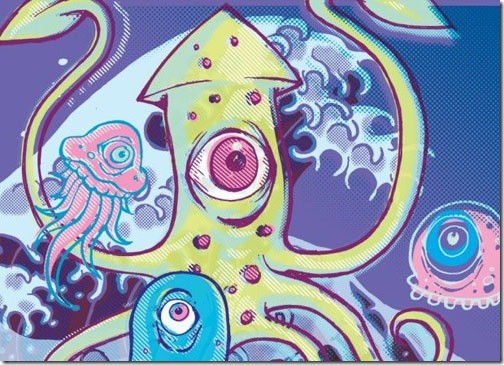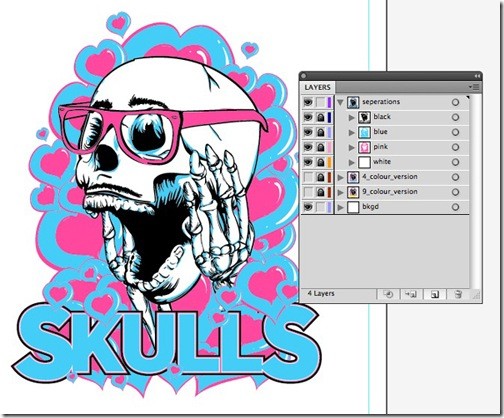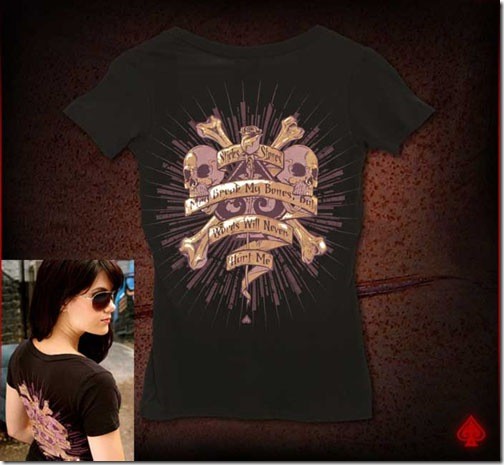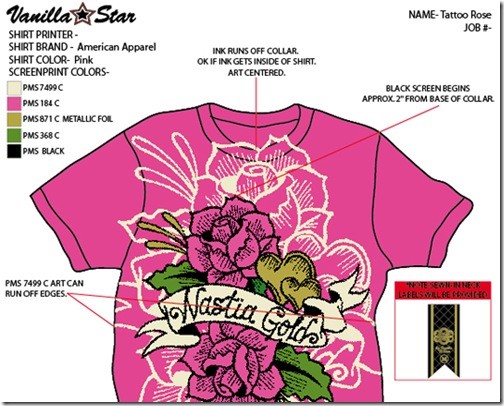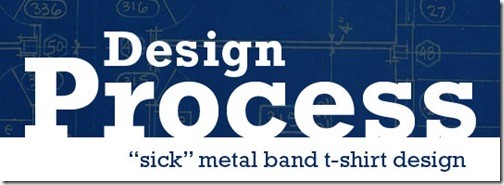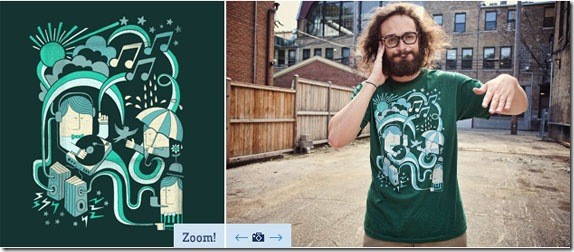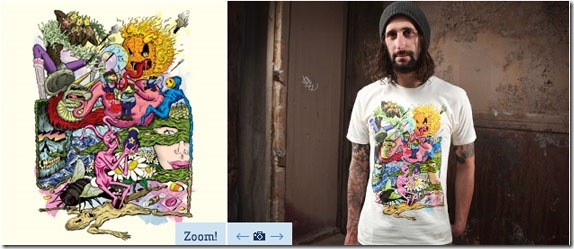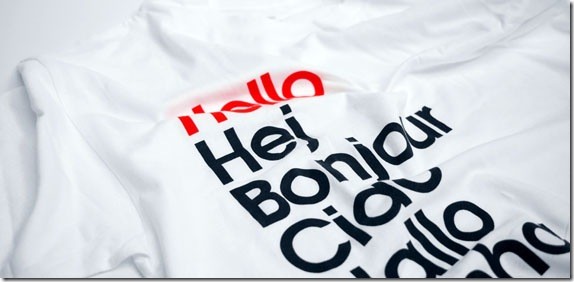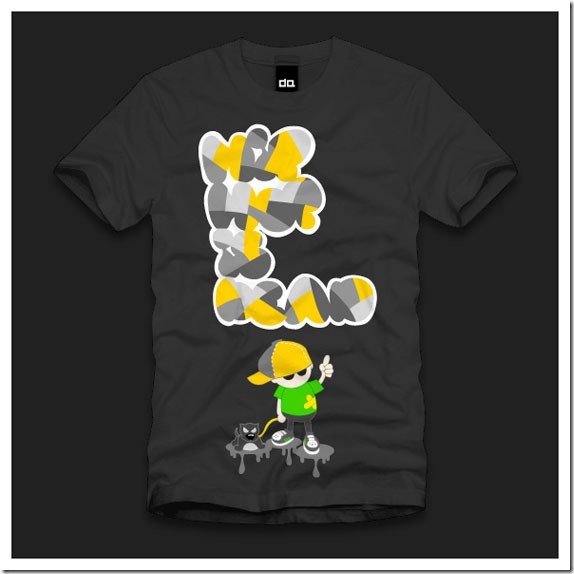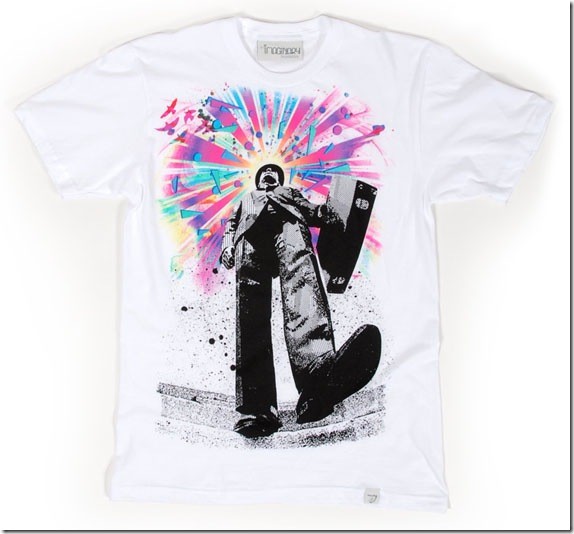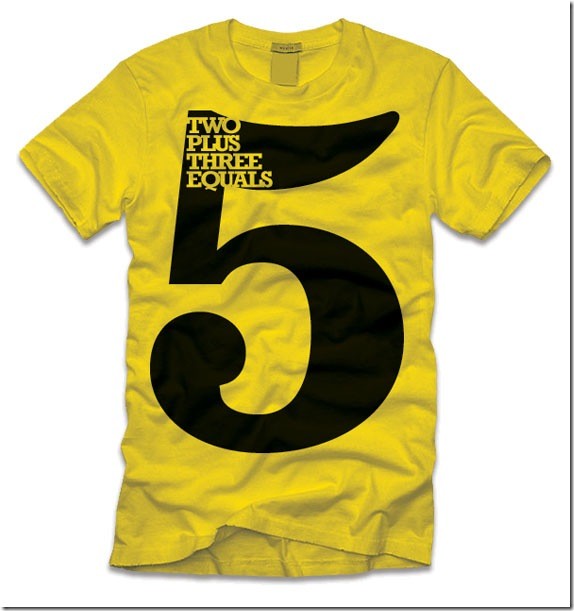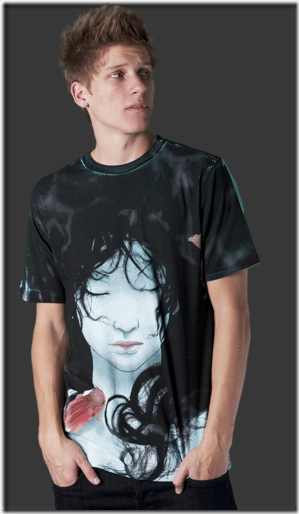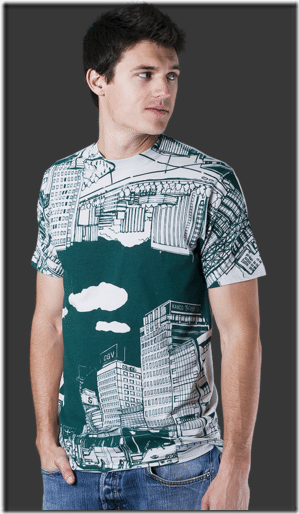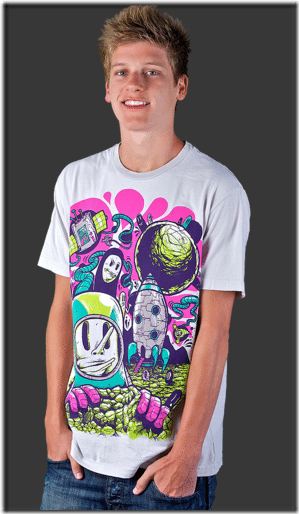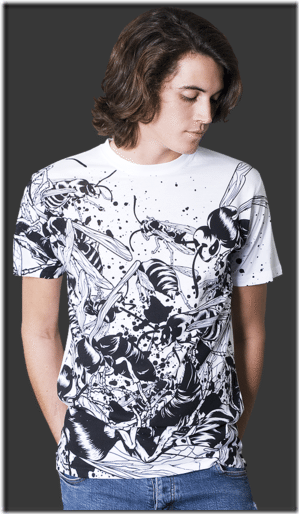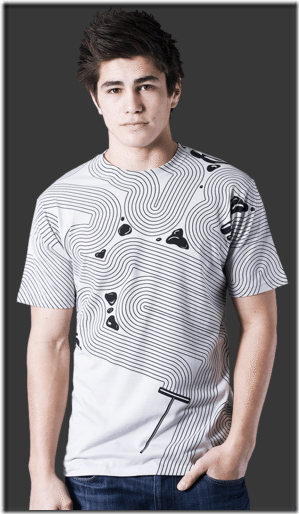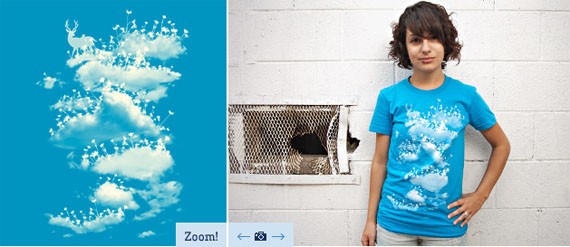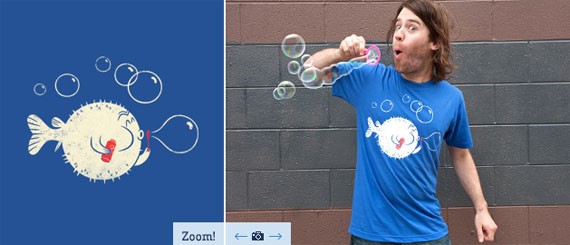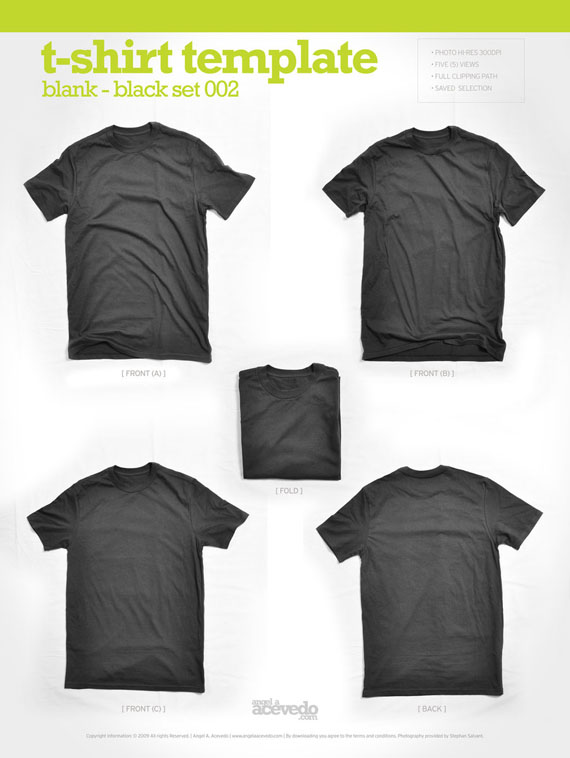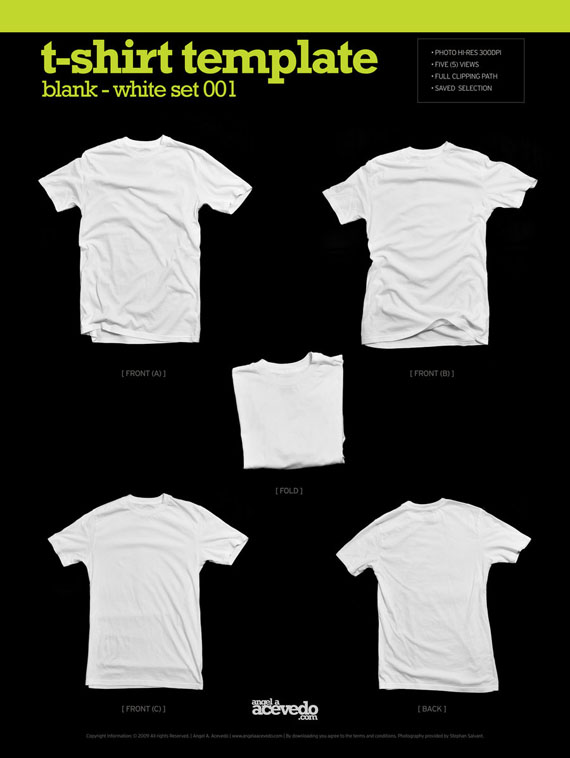Graphic design for beginners is dedicated to all beginners who wants to become a better graphic designer or web designer.
We all start learning on our own by reading tutorials around the web. We search things that we like to learn, such as a button effect tutorial, typography, web layouts, illustration, and a lot more.
Along the way we end up hopeless, thinking that we can’t be as good as already established designers and then just stop there. Have you been there? I’ve been at that point. And I’m telling you, don’t look down on your skills because every person who strives hard will eventually reach success.
The Freelance Designer Toolbox
Unlimited Downloads: 500,000+ Web Templates, Icon Sets, Themes & Design Assets
All starting at only $16.50 per month
Striving for success without hard work is like looking for fruit in places that you didn’t plant seeds! Useless! -Rev Run
Table of Contents:
- Graphic design for beginners – Be Curious of The Things That You Cannot Do
- A Beginner’s Guide on How to Pursue a Graphic Design Career
- Why the Starving Artist No Longer Exists
- A Clever Theft – Steal Inspiration Everywhere
- 47 Insanely Awesome Pieces of Summer Inspiration
- T-Shirts Designing: Ultimate Roundup of Tutorials and Inspiration
- The Wizard of Design – Piet Zwart
Graphic design for beginners – Be Curious of The Things That You Cannot Do
As mentioned above this is dedicated to all of you, who are just starting out. However also others that are already steady in the business can find some interesting stuff. Everyone starts at the bottom and everyone can shine if they strive to improve. Let’s roll!

So you were probably searching the web and came across a great and well-designed website and you were like, “oh, wow! What a lovely design!” Then you probably asked your self these questions:
- How did they do these buttons, the shadow effect and 3D effect?
- What color scheme did they use?
- What is the actual width of the website?
I am always doing that which I cannot do, in order that I may learn how to do it.
– Pablo Picasso
Quick Challenge
First, I’ll assume that you know the basics of Photoshop. Here’s the thing you need to do. Don’t look for a tutorial out of it first, because you probably will end up searching the wrong effect you want to achieve, but instead, open up Photoshop and try to copy the effect of the button.
Sounds hard, right? Since you don’t know how to replicate the technique yet. But what’s good about this is that you will explore the Blending Options Panel and while playing with it, you will probably come across with other bunch of effects until you achieve the effect. I know, I know it will not be a 100% accurate imitation, but the good thing is that you will learn something while playing.
Second, you are curious of what color scheme they used? Well, it’s easy to find out how. Take a screenshot of the website and paste it on Photoshop, then use the Eye Dropper Tool(I) to inspect and find out the color.
For a quicker process, here are some browser extensions:
- Chrome: Eye Dropper
- Firefox: ColorZilla
Finally, here’s how to know the width of the website. It’s basically the same process on how to pick a color, but this time using the Ruler Tool(U).
Browser extensions:
- Chrome: Page Ruler
- Firefox: MeasureIt
Here is a simple challenge for you to figure out yourself.
Using Blending Options and find out how to make the following buttons as shown in the screenshot bellow without using Stroke.

Post your answer on the comments section and also your thoughts about this article.
By doing so you are learning on your own and that is great, it will boost up your knowledge and creativity in Photoshop.
Read Tons of Tutorial

We all know that not everyone is used to learning and discover something by themselves. Every beginner needs a step by step guide to accomplish certain task that they want to achieve using Photoshop.
The solution for this is to read tons of tutorials that are available on the web. Start with the simple ones.
Here are some great tutorials to improve your Photoshop skills.
- Getting Started: Exceptionally Great Beginner Photoshop Tutorials
- 50+ Easy to Follow Photoshop Poster Tutorials
- Template Show: How to Design a Gallery Layout in Photoshop
If you already know the basics of creating web layouts, banners, and business cards, instead of looking for tutorials look for Quick Tips , this will boost your workflow, make it much faster and much easier.
- 4 Simple Steps To Make Silhouettes Using Photoshop
- Using Retro Style Images And Banners For Advertising
- Super Simple Emboss Photoshop Text And Lettering Tutorial
Now Experiment!

So now that you know the basics and techniques it’s time to experiment a design. I call this Freestyle, you have the freedom to do anything, think creatively based on the knowledge you have learned.
There ain’t no rules around here. We’re trying to accomplish something.
– Thomas Edison
So here is an example:
If you want to apply some Stitches to your design, based on your knowledge in Photoshop you will think that you can do this by doing the following steps using:
Line Tool(U)
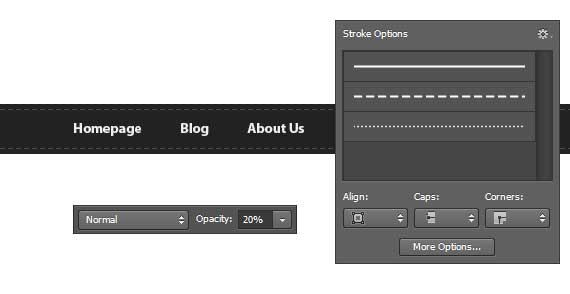
You might think, “hmm.. I think I can do this using Line Tool(U), Adjust the Options and decrease the Opacity in the layer options panel.”
Type Tool(T)
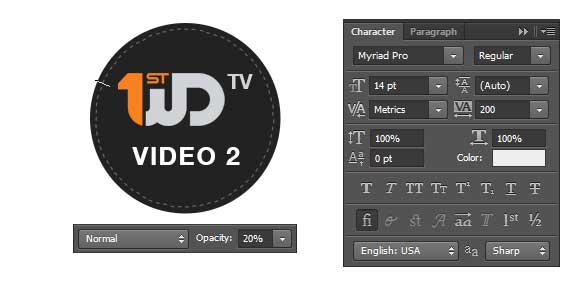
This time there is a part on the layout where you can apply a Stitch on an Ellipse Logo. Then you might say, “I can’t do this using Line Tool,” then start thinking of other alternative of doing so.
Then you might think, “hmm.. I think I can do this by using Text Tool(T), because Text Tool works on Shapes Path. I’ll try to create an Ellipse of about 20px less than the actual width of the base shape, adjust the text spacing in Character Panel, and finally decrease the Opacity.”
Great! You just achieved what you wanted to do based on your knowledge using two tools. It feels like you are a pro now. I know that feel, bro. :)
But seriously, what I’m trying to say is don’t just limit yourself on tutorials, try to think creatively, believe that you can do something in a different way where it can be much easier.
Join Design Communities
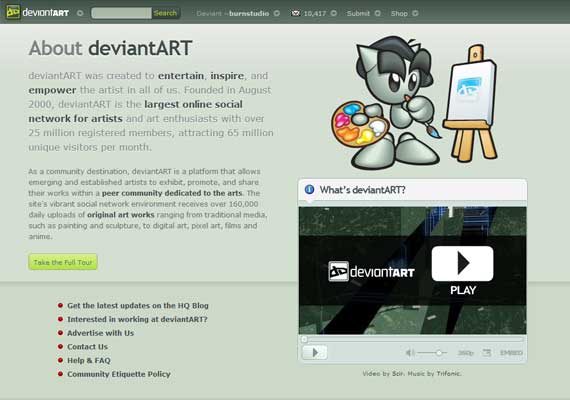
After all the hard work of practicing and experimenting you may have created a masterpiece. Now you are looking for a place to showcase your design. I suggest joining deviantART, this is a great design community for starters.
Here is my first Web Interface that I uploaded on deviantART.
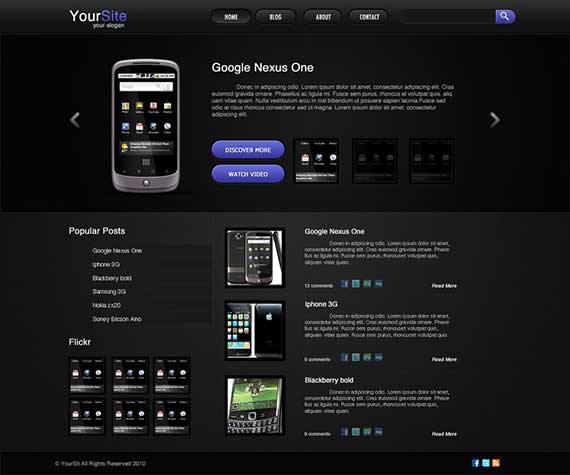
Design community alternatives:
- 7 Best deviantART Alternatives for Web Designers to Showcase their Skills
Why you need to join a Design Community?
- Connect and Socialize with other designers with the same interest.
- Develop skills and experience while sharing your design skills and knowledge with others.
- Being Active makes your name known. Which is good because you are marketing yourself for free by just participating and showcasing your designs.
- Probably you’ll Meet your first Client. :)
Some designers create things to show you what they did. I design things to tell you what I solved.
– Brian Yerkes
Join Design Contest

During the time I was in college I was lucky enough to be chosen to participate in a design contest in school where top designers from each class were required to join. After that I asked my self, “are there design contests on the web?” and gladly there are. I found out from my friend on deviantART.
During that time, I was on the stage and I have already showcased tons of my designs but still I haven’t got any client and I wanted some cash from all of my hard work. For me, the best solution that time was to join a design contest.
So how do Design Contests work?
Buyers or contest holders run a design contest based on a category like web, print, or logo. Everyone can participate on the design contest and can win.
Where to Join?
Note when joining a contest:
- Take this as your first client and meet their needs.
- Give your client at least 2-3 design alternatives.
- Show some interest and talk to client on the feedback section.
By doing so, you are letting your client think that you are really interested and he/she will probably choose your work. Then you will be rewarded with a pot of dollars.
Pros
- You will learn to design based on a real word design project. If you will take the contest seriously and gather research based on the Design Brief they attached.
- This can really boost your creativity.
Cons
- I will say, you have a 1% chance of winning.
- Requires hard work.
- Makes you hopeless.
Way back in 2010 I participated on tons of contests from the websites that I mentioned. I wasn’t selected as a winner and that made me really hopeless indeed. But still I participated actively. Then finally the day arrived and I won.
My Winning Entry

One day I read something about Spec Work (Speculative Work). After reading I realized the time and effort that I put in joining design contests that went to nothing. This made me stop joining design contests and thought of other solutions where I can earn money.

Here is a great article to understand what is Spec Work.
- What is Spec Work and Why You Should Say No
I thought I will never join a design contest again but last May 2012 I experienced a down time where I really needed to find money aside from my Job. So what I did was I participated on a design contest again and it really helped me solve my problem during that time.
Here is a good article for you to read.
- Why And When Doing Spec Work Might Be A Good Idea
Share your Ideas by Guest Posting

When I realized that joining design contests is not good for me, I asked my self ,”what if I’ll share my knowledge about designing in Photoshop? The same with the tutorials I read before by great authors.”
That is when I decided to write a tutorial. What I did, I contacted a bunch of web design blogs and asked them if I can write a step by step website template tutorial for them. Most responded negatively. They didn’t think that my level of creativity will suit their website. But there is this one blog that accepted me to write about the said tutorial. Guess what blog? Yeah, it’s 1stWebDesigner. Which really placed a big smile on my face and I felt really motivated that I will soon provide the blog a great detailed tutorial.
Here is my very first tutorial.

I suggest that you should do it too. Don’t be afraid to write and share your ideas by Guest Posting. I assure you that you will enjoy, earn money and learn more.
Here is a guide for Guest Posting:
- The Shortest Web Design Guest Posting Guide You’ll Ever Need
Also, there are lots of benefits while you are guest posting about Graphic/Web Design. Which is mentioned in Rakhita’s Article:
Conclusion
If you are just starting to learn web/graphic design I suggest that you follow through the things that I mentioned. Strive hard to be good on your preferred niche, that’s a guarantee that you will achieve your goal to become a good web/graphic designer someday. Just don’t forget to keep on learning and listen to other designers’ feedback because this will really help to improve your skills.
Now let’s look at how to really pursue the graphic design career.
A Beginner’s Guide on How to Pursue a Graphic Design Career
Done with college? Time to opt for a real career and get out of your part-time money-earning world? It isn’t easy out there especially when you want to opt for a career option which isn’t as safe as the job of software engineers is. Don’t get me wrong, I am a software engineer myself and I know that a 9-5 job with reputed I.T. company can make you feel safe. My point here is that a career option like Graphic Design is very nice and the process isn’t as automated as it is in various MNCs. This makes it a bit difficult for the infant web designer to find a way through the newly coined term Designer Poverty.
Who is a graphic designer?
Graphic Designing is a form of art. The designer has the privilege to come up with an interface which will please the end-user and leave a lasting impact on their brain. So, a graphic designer is basically a person who uses a set of colors, typefaces, imagery and animation to give come up with an end result which fulfills the pre-define requirements. This end result could be on print or in digital. At the end of the day it is the smart use of all available tools and perfectly thought layout that will result into aesthetically pleasing design.
Where can a graphic designer find a job?
Graphic designer is responsible to develop the overall look and feel of the product. Without a properly planned design any genius product can fall head first. Henceforth, the importance of graphic designer is equally important during any product development life cycle.

Some of the areas (other than the usual website designing) where graphic designers can look for jobs are:
- Interactive Media – This is one of the very widely popular niches where graphic designers can search for their fate. Basically, anything and everything that is related to text, graphics, video, animation, audio, etc. I guess this should be enough to explain that interactive media is one of the most luring niches where graphic designers can look for a job.
- Promotional Display – Ever wondered who is responsible for various billboard designs and other similar promotional displays. Well, it’s the graphic designers like you who do all the hard work.
- Journal – Various journals (serious or humorous) constantly come up with various designer elements to keep the audiences glued. These designs can be as small as a normal company logo or as large as a complete cover design. Depends on your luck.
- Corporate Reports – It might not sound like a regular jobs but there are designers who have made a business out of this itself. Freelancers hold expertise in designing corporate reports that look professional but aren’t really boring.
- Marketing Brochures – These are something similar promotional displays and once again these cannot be complete without the presence of a graphic designer.
- Newspapers – This happens to be one medium where there is a constant need of tweaking the final layout in order to come up with something that is a professionally compiled newspaper. Graphic designers can help newspapers look like newspapers.
- Magazines – Just like newspapers and Journals, Magazines too require the help of graphic designers before every possible publication just because a lot of visual layout is part of every magazine.
- Logos – That is one of the most famous and sort after jobs for graphic designers. I will call this a sort after job as it is not difficult to start as a freelancer in the world of logo designers. You will easily get some contract for starters and you can take it further from there.
- Website Designing – And, here comes the last resort for a graphic designer when he/she has been pushed out from every other field without any proper response. Design websites and you can at least earn money for your daily burgers.
What educational background is required for a graphic designer?
Although zero educational degrees will do good if you plan to be a freelancer. On the other hand if you are planning to work for some organization than a Bachelor’s degree in graphic design is a requirement set by almost ever company. Other than that you can consider the pointers below to strengthen your chances of getting into the company of your choice:
- Familiarity with computer graphics and various design software.
- Problem solving skills, creative vision, and good communication skills.
- An associate degree in graphic design will usually make you eligible an assistant’s position.
- Up-to-date knowledge of latest news from the graphic design industry is a must as this industry is pretty volatile.
- A portfolio so as to prove that you have it in you what it takes to be a graphic designer.
- Work experience of around 2-3 years before you start dreaming of stabilization and higher degrees.
National Estimates For Graphic Designers (U.S.A Based Data)

Once you start going through the statistics furnished by Bureau of Labor Statistics then you start feeling that life isn’t that tough for graphic designers. Here are some quick numbers (the figures are as of May 2010):
- 192,240 graphic designers were employed around US with a mean hourly wage of $23.14.
- California had the highest number of employed graphic designers with 26,390 employees.
- New York was closed second with 18,970 graphic designers.
- It is estimated that the employment of graphic designers will increase by 13 percent by the year 2018. It is estimated that around 36,900 jobs will be added around US itself by the year 2018.
Graphic Designer Salaries
If statistics provided by Designer Salaries is to be believed then graphic designers can earn above $100,000 per year from Graphic Designing and related jobs. Here is a breakdown as per stats collected between year 2000 and 2010:
- Owner, Partner, or Principal – The salary for this niche ranges between $100,000 to $110,000.
- Solo Designer – The salary for solo designers ranges between $52,000 to $$56,000.
- Creative and Design Director – The salary in this case is between $85,000 to $100,000.
- Marketing or New Business Manager/Director – Salary for these is between $75,000 to $80,000.
- Writer/Copywriter – The salary for writers/copywriters ranges between $44,800 to $62,000.
Conclusions
The world of graphic designers might not look like overly shining from the top but at the end of the day it is about your passion which you want to live. If you are good at it then you really don’t have to rely on any day job and sky is the literally the limit for you.
As a web designer or a graphic designer you are a some kind of artist, aren’t you? If you go freelancing that’s even more true you don’t take a safe road but you try it on your own. You are didn’t take a conventional path, and we say that’s great. Read on and see why the stereotype of starving artist is dying. Never let anyone tall you that art and business don’t mix.
Why the Starving Artist No Longer Exists
Every artist knows that the path to success is largely rocky and unpaved; filled with obstacles and challenges along the way. If you are a struggling artist, you may have felt abandoned by your family and friends occasionally. You might have been discouraged by others who called you foolish or immature. You might have been told to grow up and get a real job. But your creative soul knows there’s more to just getting a safe job and being just like everybody else.
Let’s admit it. Being an ‘artist’ is not the most practical career choice to make. It’s highly unpredictable, and you need a certain degree of luck to be able to break through. Choosing to be an artist seems like voluntary poverty. And in these hard economic times we are facing today,being an ‘artists’ seems all the more impractical, if not a stupid career path to take.
It is in this world of consumerism where people are taught to go corporate and look down upon artists and creative souls. We are all aware of the ‘starving artist’ archetype. That’s how society sees anyone who is ‘unconventionally creative’. You’re doomed to become starving artists unless you give up your artistic aspirations.
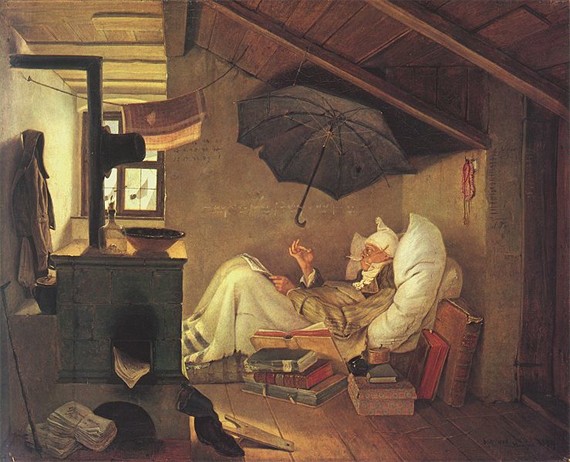
The Poor Poet by Carl Spitzweg (Image by Wiki)
Where did the ‘Starving Artist’ Stereotype come from?
The ‘Starving Artist’ evokes a romantic and mysterious feeling around it. The image evokes stories of the past; of artists, sculptors, musicians and actors who chose to live a life of poverty to pursue their dreams of success. It particularly evokes memories during the 18th Romanticism period. You can imagine young, enthusiastic men from the countryside dreaming to be artists who moved to the city and find themselves living the Bohemian lifestyle.
Even our greatest artists in history did not escape the fate of the Starving Artist. The Bohemian lifestyle—or unconventional living in the company of people with similar interests for artistic pursuits—is a common lifestyle chosen by artists then and today. Most did not see fame and fortune during their lifetime, only to have their works become worth millions of dollars after they passed away. One example is the great Vincent Van Gogh. Now, he is considered to be a true genius in art. Van Gogh’s works are worth a fortune now but during his lifetime, Van Gogh only sold one single painting–to his own brother.
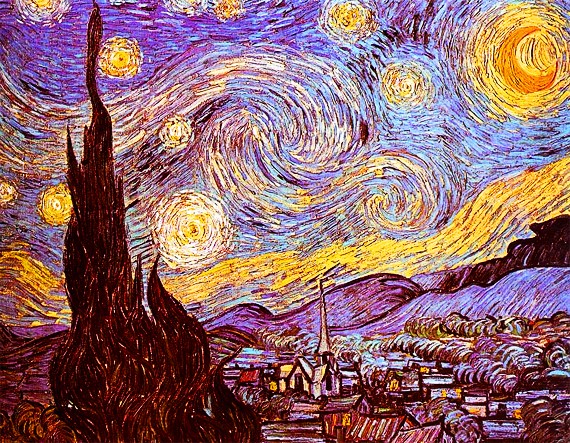
Vincent Van Gogh’s ‘Starry Starry Night’ is estimated to be worth more than US $100 million (although it is not for sale)
These legendary artists must have had found their fate funny when they died–all the sacrifices they made were never reaped and enjoyed. They can only look down from the afterlife and see how they’re valued and revered now. But if you think about it, maybe it wasn’t because the great artists weren’t given the chance to succeed. Or it wasn’t because these geniuses were just jinxed. In fact, most of the great artists of our history have poor financial sense. They prefer to squander their money with booze, drugs and women. Some were even economically foolish people with no plan or direction in life.
The Starving Artist vs. the Sell out
Because of how literature and popular media portrayed artists, the artists themselves were made to believe that they should lead a life of poverty. They hold on to this notion that art made from the impoverished article is superior from that of a well-off artist. But I beg to differ.
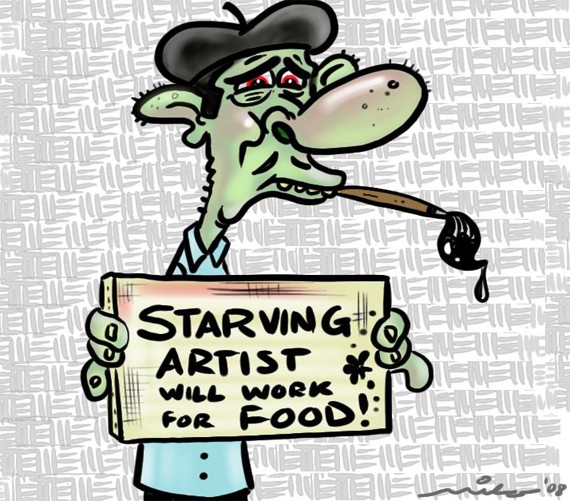
Image by Chicagoist
First of all, the ‘Path of the Starving Artist’ leads artists to a path that isn’t helpful, to themselves and to their careers. Poverty doesn’t always equate to better art. Knowing yourself and mastering your technique leads to better art; and poverty is only a distraction. Yes, the Starving Artist is a Myth! There are already plenty of artists that lived comfortably because of their art. Rembrandt was very successful in his time. So was Charles Dickens and Andy Warhol. Of course it’s more tempting to romanticize stories of failure, like the stories of Van Gogh and Mozart.
But on the other side of the spectrum, one can be in danger of becoming a ‘sellout’. Most artists dread becoming a sellout more than being a starving artist. Being a sell out is a term used within the artist group only; labeling those who are believed to have sold their artistic beliefs and aesthetics to have outward success.
But artists must not feel guilty to make a fortune from their art. You are not selling out because you’re making money–artists still need to eat, after all.
Job and Business Opportunities for Artists
Today, choosing the creative career path doesn’t mean you’re doomed to a life of poverty. Despite the recession, you can still find tons of jobs in the industry. It is time to debunk the ‘starving artist’ myth and believe that you can earn a decent income over a job or business that you will love.
Here are just a few fine arts-related jobs that you might want to consider:
- Graphic and Web Design – These artists create most of their art in front of the computer, doing layout, color manipulation, post-processing and design to meet the client’s needs. Graphic and web designers will mostly create logos, website layouts, animation, online and magazine ads, etc. You can make a starting income of around US $40,000 a year. While you don’t really need formal education to be a successful web and graphic designer, having a bachelor’s degree in design can be a great advantage.
- Video Game Design – Video game design is undoubtedly one of the best jobs in the world. Depending on your department, you get to develop the characters, story, gameplay and even music. One can earn as much as US $100,000 by doing something as cool as video game design. Most companies look for applicants with a degree in animation and video game design.
- Copywriting – If you’re good with writing but still haven’t finished your own novel masterpiece, you can get by through copywriting. Creative writing is big, as companies are constantly looking for writers to write content that’s interesting and concise. You can earn around US $60,000 to US $90,000 in copywriting. Having a degree in liberal arts, communications and journalism will greatly help with this endeavor.
These are just a few of the career paths a creative-minded individual can consider. Of course, you can go freelance and not have to be associated with a particular design company. Better yet, you can be your own boss and start your own business. People innately love art; and they are always willing to pay for anything new and beautiful. The belief that art and business don’t mix comes from the same idiot that created the starving artist myth.
Now that we have gone trough some tough themes of graphic design or more accurate trough tough design themes, let’s look at some other aspects. As a designer you need inspiration, right? Let’s dig in!
A Clever Theft – Steal Inspiration Everywhere
Steal like an artist. Some of you might remember the huge attention Austin Kelon’s article got. If this is the first time you’re hearing about it, quick, close your windows and read it, Steal Like an Artist and 9 Other Things Nobody Told Me. The original article managed to reach millions of readers and a lot of people regard it as a must read for any creative. So do I. What’s more, the post has expanded into a book and, guess what, you can buy it on Amazon.
I’m not going to repeat the things Austin talks about. You should read them yourself and make your own decisions. I’ve pondered these stealing and creativity things for a while. Nothing is original. I agree with that. But then you start to think. And the thing I figured out is that I don’t care. I don’t care if there is something original left in this world or there isn’t. Why should I care? I’ll keep doing what’s right for me and pursue growth and success.
There’s this one quote I have had in my head for some time now, it’s a quote from an article by photographer Eric Kim, Bad Street Photographers Copy, Good Street Photographers Steal.
Style isn’t something aesthetic
He states that style is something you discover rather than learn. Style is much much more about how you see the world, than aesthetics. He applies this to photography, but I believe it can be applied to something bigger. To life, and again, what he promotes to do this is stealing. Stealing ideas, stealing inspiration.
That’s why I decided to come up with this article (scribble to be precise). This is what you and I face everyday. Stealing sounds awful doesn’t it? You experience something everyday. Even if you’re staying in all day. No matter if it’s a lonely walk by the seashore, conversation over a beer or beautiful sky at night. Inspiration is everywhere.
I don’t think inspiration is even the right word. It’s a bit worn out these days. Look at this design, go to this play, listen to that album. It’s simple and not that simple at the same time. I believe that every experience you have somehow stays in your subconscious (and I didn’t even misspell this). There’s one nice little word I like. Satori. Satori is a Japanese Buddhist term for enlightenment, meaning “understanding”. I know nothing about Buddhism and I certainly cannot claim that I truly understand the meaning of this word. Yet I know something about being true to yourself and I’ll presume that I’ve truly felt these moments of enlightenment. They’re probably thousands of miles away from the true satori moment but they do work for me. And that is what matters.
You are what you keep around you. You are what you read, what you see, who you meet. Maybe even what you eat. The more you collect, the stronger you’ll be. Random conversations, dreams and little snippets of life. Try to absorb everything. A good way of recollecting everything is by writing a diary. I’m, for example, trying to take a picture everyday.
Ok, enough talking. Check out what I’ve prepared for you.
Read
On Defining Success
Adii Pienaars’ thoughts on success. Can success be defined? Is success only related to wealth? Find out other people opinions and think about yourself.
Vision Without Obstruction: What We Learn From Steve Jobs
“Jobs didn’t “think different” just for the sake of it, he just refused to conform to traditional expectations and limitations.” Learn how to keep your vision clear without obstructions. Let no obstacles slow you down.
Robert Frank – “If An Artist Doesn’t Take Risks, Then It’s Not Worth It.”
An exclusive interview with American photographer Robert Frank. Read about the book “The Americans”, photography and most importantly why artists should take risks and go further.
The Generosity Of Criticism
“We expect judgment from each other but when it comes to critique, we take offense.” Thumbs up/down culture doesn’t accomplish anything. It takes something more to say a good critique, you have to make a contribution to other people.
I’m Sick Of Pretending: I Don’t “Get” Art
“They are in the process of spending three minutes looking at a photograph of a woman they don’t know sitting on a chair. Can you imagine how quickly they’d be skipping over this photo if it was in their mum’s holiday snaps?” What do you think of postmodernism art? Some think this article is just a coarse way of getting attention yet I believe it’s straight on topic and hits people on profound issues they don’t want to delve into.
Explore
Photoblog Awards 2011
The finalists and winners of the 2011 Photoblog Awards have been announced. This is a great place to wander in late evenings.
52 Weeks of the Street Photography Now Project
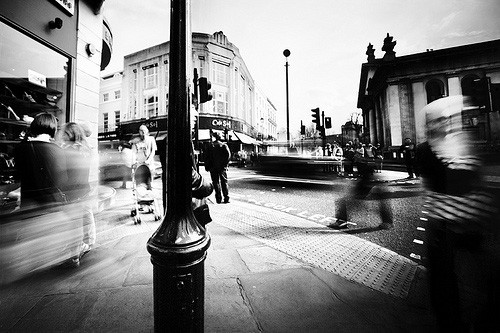
photo by Jo Wallace
“The Street Photography Now Community (SPNC) is the continuation of the Street Photography Now Project (SPNP), a collaboration between The Photographers’ Gallery, London and Sophie Howarth and Stephen McLaren, authors of Street Photography Now (Thames & Hudson). Its aim was to build a global community of photographers exploring the rewards and challenges of documenting public life,
The SPNP ran on Flickr for 52 weeks from October 2010 to September 2011. Weekly instructions were given by established photographers written to inspire fresh ways of looking at and documenting the world we live in. Participants had to shoot street photography every week and upload their best shot to the instruction group.”
#The50 Things Every Creative Should Know
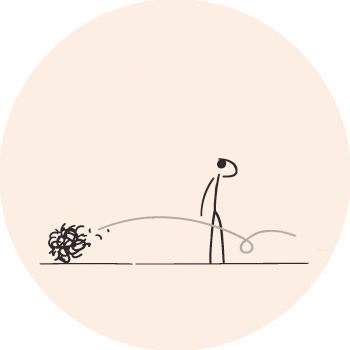
“#the50 is the first fully-Tweetable primer for graduating creatives. #the50 addresses the most common concerns held by graduating creatives and aims to bridge the gap between art college and the professional world. Each piece of advice has been written within 140 characters and features a consistent hash-tag, making them easy to share across Twitter.”
My Modern Metropolis
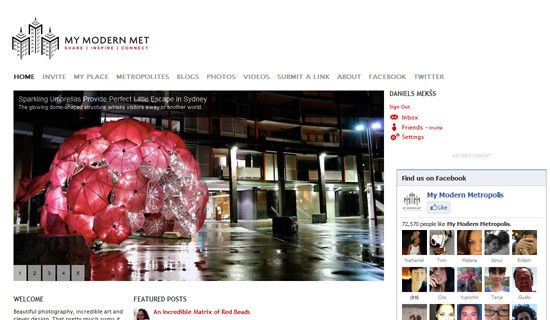
My Modern Met is where art enthusiasts and trendspotters connect over creative ideas. Beautiful photography, incredible art and clever design.
Listen
Michael Wolff – Is this a good time for creativity?
isthisagoodtime addresses questions to proficient people starting with “is this a good time?” Find out what American author and journalist Michael Wolff has to say about creativity.
Sherry Turkle: Connected, but alone?
“As we expect more from technology, do we expect less from each other? Sherry Turkle studies how our devices and online personas are redefining human connection and communication – and asks us to think deeply about the new kinds of connection we want to have.” Aren’t you tired of seeing people constantly having their phone in hand and refreshing their Twitter feed? Learn why it’s important to learn to be alone.
Austin Kleon – “Steal Like a Writer” at WMC Fest 2012
Previously mentioned, Austin Kleon gives a talk about stealing like a writer. “No matter what your discipline, it’s hard to get any good work done without clear, straightforward communication. Simply put, being a good writer makes you better at your job. Using a few school supplies, a little visual thinking, and a whole lot of creative theft, this talk will help get you started on the way towards becoming a wordsmith.”
50 Days For Dilla (Vol. 1)

“In dedication to the late James Dewitt Yancey better known as J Dilla or Jay Dee, beat-smith Ta-ku has produced a track each day for 50 days; each song embodying the very recognizable essence of the “Dilla sound” so cherished by fans far and wide, showcasing Ta-ku’s eclectic production prowess.” Good music is always appreciated.
Torgny – “I Came Here”
Great music with great visualization. Check out the whole trilogy here.
Watch
“Second Nature” A Documentary Film About Janne Saario
Second Nature is a 20-minute documentary on Element team rider and budding landscape architect, Janne Saario of Finland.
The short film allows a glimpse of Saario’s thoughts and dreams, which float between design, art and skateboarding. Though it also reveals the important concurrence of post-industrial areas, sustainable concepts and natural environments, and unfolds the demanding obligation, towards today’s generation and those to come, to create positive and inspiring, local communities.
PressPausePlay
“The digital revolution of the last decade has unleashed creativity and talent in an unprecedented way, with unlimited opportunities. But does democratized culture mean better art or is true talent instead drowned out? This is the question addressed by PressPausePlay, a documentary film containing interviews with some of the world’s most influential creators of the digital era. ”
The creative and art worlds we used to know is gone. We’ve destroyed the old world and its order. But we’re not in the new world yet. We don’t know what’s next for us.
Une Fille Comme Les Autres
Brilliant example of how an advertisement should look.
The Dreamers
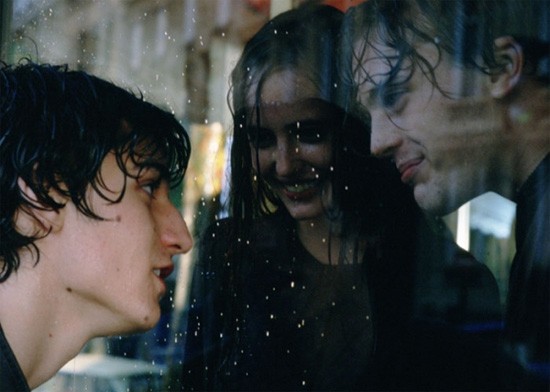
The Dreamers, a film by Bernardo Bertolucci, tells the story of enigmatic French twins and their American friend in Paris during the 60s. They share love for movies, friendship and marvelous intimacy.
The Street Aesthetic of New York City
New York is like the Mecca for street photographers. This video includes recordings from both Manhattan and Brooklyn trying to capture the culture and everyday life of native New Yorkers.
Conclusion
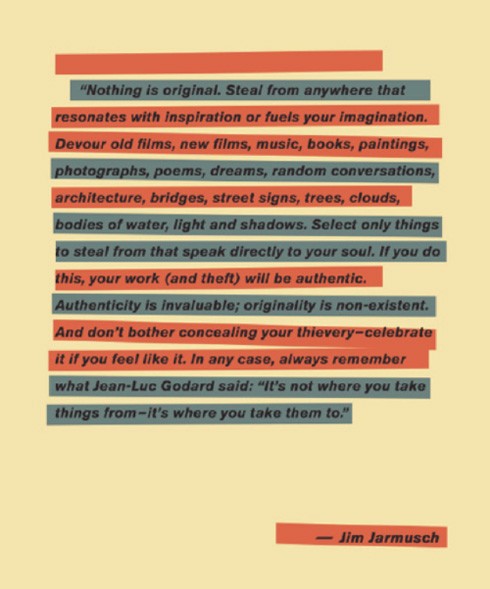
This is the list of things that have inspired me and now you can read into my soul. We all live so far from each other that’s why I have to limit this article with things that can be found on the internet. But remember that inspiration is everywhere. Learn to be a thief. A clever thief.
I’d love to hear your comments on this kind of inspiration article. I can pitch you an idea – each week you guys send us tweets about interesting and creative things you’ve found, no matter if it’s a website, an article, or a photograph of a funny cat you saw that day, and we’ll wrap them up and put them into an article so everyone can see. What do you say?
The next thing is some great examples for your inspiration.
 47 Insanely Awesome Pieces of Summer Inspiration
47 Insanely Awesome Pieces of Summer Inspiration
The wonderful summer is right around the corner for many of us. This inspired me to this time find some truly refreshing and inspiring pieces of art that cherish summer. Whether you love summer, flowers and beach life or not, I’m sure you will find some inspiration here. This collection has illustrations, photo-manipulations, drawings and photos for you to get refreshed and inspired by!
All of these artists have managed to capture the spirit of summer in their own unique ways. Remember to click on the artworks to go visit the originals in full size. Enjoy!
1. Frisky Summer by ~sushi-boy
2. Last Day of Summer 2006 by *zelda994612
3. Chillaxin’ by *celesse
4. Summer Delicious by *JrDragao
5. Summer… by =viamallorca
6. In the Summer by ~SheDreamsInColour
7. Sun Flower by *CQcat
8. Heart of Summer by ~Caoimhe-Aisling
9. Jinki’s Lazy Summer… by ~CLassicNightmare
10. Summer Days by *Nightingale628
11. Summer Days by *kokamo77
12. Summer Flowers by ~kikks92
13. Marilyn Summer by ~Kitakutikula
14. SummeR MadnesS by ~detwayler
15. Summer evenings… by ~Mbalenhle
16. Summer in Foreign Colors by ~MuuuSaki
17. My first summer by ~grazrootz
18. SUMMER FRUITS by ~DarkKokeshi
19. Summer Breeze by ~pure-forest
20. Retro Summer by ~fabianzoeller
21. summer by ~lejaaaaaaaa
22. Summer Dreaming by =mskate
23. First Of Summer by ~lalalaiizaa
24. Summer Vacation by =pyro303
25. Summer Fairy by ~gatasombra
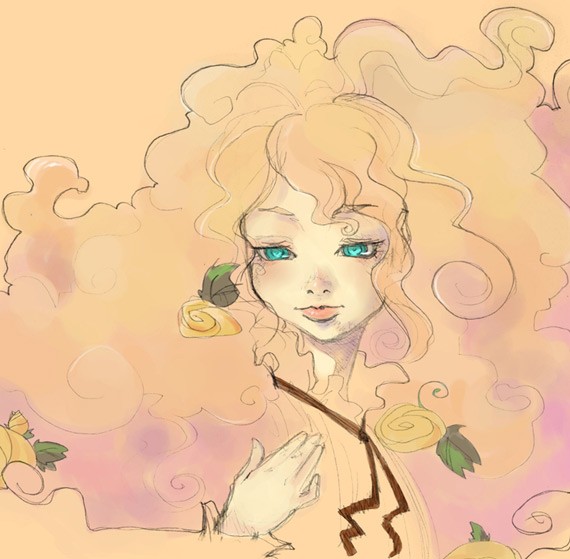
26. summer le summer by ~cookiekeencookie
27. Summer Skies by *sweet-reality-xo
28. Summer time by ~IbrahimAmr
29. Summer is here by *recycledwax
30. Summer daisies in sunshine by ~LeCygne
31. Summer by ~donnat
32. Summer cocktail by ~pollina
33. Summer by ~iDesignUS

34. :: Summer loving :: by =Liek
35. I Love Summer by ~designslave
36. Summer by ~sahandsl
38. Four Seasons – Summer by ~skullyan
39. Ready For Summer by ~robmmad16
40. Summer by ~mfggomez2
41. Summer by ~Zzanthia
42. Summer. by ~MellyBaldin
43. Flowers by *mashi
44. Summer fun that never ended by `thienbao
45. Perfect Summer by ~D-e-v-i
46. Summer trip by =Surround
47. The sun is riseing by ~Hellobirdtreecat
Those were 47 summer pieces for your inspiration. I hope you enjoyed them!
To end this article here is a great tutorial on designing a T-shirt and of course, some inspirational material is included.
 T-Shirts Designing: Ultimate Roundup of Tutorials and Inspiration
T-Shirts Designing: Ultimate Roundup of Tutorials and Inspiration
T-shirt is a part of our everyday clothing and it is used extensively no matter what your age is, we can also say that, it is a basic clothing need of everyone. T-shirts are being used widely in every society whether it is simple or designed but T-shirts with unique and creative designs are always appreciated and accepted. Due to high demand of fancy and beautiful t-shirt design, designers are, always, in search of unusual and creative ideas to boost their recognition in market. That’s why today we have collected some best tips and tutorials of t-shirt designing and on screen printing too because it is also an important part of printing t-shirts. We hope if you go through these tutorials you will certainly learn something out of these useful tutorials and tips
1. Create Vintage Style Zombie T-shirt
2. DIY vintage T-shirts
3. How to Show your T-shirt Designs With Realism
4. How to Create Photorealistic T-Shirt Mockups
5. Design a Retro, Rock T-Shirt Design
6. Create a balanced T-shirt graphic
7. CMYK Process Printing for the Emerging T-Shirt Designer
8. Designing Ultra SceneXCore Apparel!
9. How to create a T-shirt from scratch
10. How to Create Awesome T-Shirt Mockups Like Jimiyo
11. How to design a funny Monkey T-Shirt illustration
12. How to Prepare Artwork for Screen-Printing
13. Photoshop T-shirt Design
14. How to Create a Cute Vector Bear T-Shirt Design
15. Skull T-Shirt Design
16. Create a Custom T-Shirt Stencil Design
17. Create a Three-Color Illustration for Screen Printing
18. Screen-print effects
19. Super-Slick, Screen Printing Separations with Illustrator
20. Rapid-Fire Illustration Technique
21. How to design a t-shirt on a budget and a tight deadline
22. Create a Complete Apparel Tech Pack
23. Design Process: “Sick” Metal Band T-Shirt
24. Make it Look Like Affliction
INSPIRATIONS
Apart for the tutorials listed above, we have also collected a bunch of creative t-shirts designs for your inspiration. You can have some ideas for your next design but don’t copy, try to use your own imagination and creativity too.
1. Every Night I Have the Same Dream
2. Hairwolves
3. Pass It On
4. Rabbit Valley
5. Altitude Sickness T-shirt
6. Every Day Decay T-shirt
7. Hello T-Shirt
8. Hip hop is dead
9. Giant Step
10. Math Problem
11. Pisces beauty T-shirt
12. Reverse city T-shirt
13. Space Jammin’ T-shirt
14. The Swarm T-shirt
15. Zen Garden 2.0 T-shirt
16. A Walk in the Clouds
17. Blowfish
RESOURCES
If you have made your mind to do something right now regarding t-shirt design, you can use these free high-quality t-shirt templates for your initial projects.
Blank T-Shirt – Black
Blank T-Shirt – White
Now let’s remember one great artist of graphic design.
The Wizard of Design – Piet Zwart (1885 – 1977)
As it happens with all geniuses ,Piet Zwart didn’t get the sort of recognition that he deserved. He was a rebel during his days and did not want to follow the set rules for design back then. Working late nights and swimming against the tide were his passions. His work covered a wide spectrum of industrial design. Alongside, Piet Zwart spent a lot of time excelling in the world of photography and typography. This article is a small tribute to one of the geniuses of the design industry. A human being who gave new meaning to the world of design and didn’t even ask for anything in return. I am sure that right now Piet Zwart is busy redesigning heaven!
Who Is Piet Zwart?
Piet Zwart was born on May 25 1885 in Zaandjijk, the Netherlands. Piet spent his time between 1902 to 1907 in the School of Applied Arts in Amsterdam. I guess it was his time in this school that gave fire to the rebel inside him. The school was perfect combination of various teachings like applied arts, architecture, painting and drawing. But, somehow Piet did not find the teaching methodology of the school as innovative as his brain was.
“A smashing school with no idea of a programme” ~ Piet Zwart when asked about his School of Applied Arts in Amsterdam.
Piet was highly influenced by the De Stijl movement of those days. If any influence can be noticed in his out-of-the-box work then it will be the effects of this Dutch Artistic movement which started in 1907. It was his zero attention span to whatever was being taught in school that resulted in path breaking designs. It was like he never knew about any design chapters and books. Henceforth, he had his own brain to follow which as a result took him to unimaginable heights. Piet was smart to use his own photography in his design which resulted in photomontages.
“Among the few I have indicated, is there no dynamic man of action, the rebel who will help determine the aspect of the collective expression of tomorrow? Ponder this question and know that to make beautiful creations for the sake of their aesthetic value will have no social significance tomorrow, will be non-sensical self-gratification. Every era contains the conditions for providing a rebel.” – Piet Zwart
Piet’s Career in Graphic Design
Piet Zwart’s career in graphic design got a kick start in the year 1919. He had started to work as draftsman for a famous architect Jan Wils, a member of the De Stijl movement. It was two years later when he grabbed the position of assistant for H.P. Berlarge, a Dutch architect. Piet ended up working several years for Berlarge and it was this stay with Berlarge when Piet worked on some of his first few legendary designs. The most famous of them all was the breakfast set for which he used hexagon shapes as shown in the image below:

An article on New City Art describes the work of Piet in fine words:
The emphasis on form rather than decoration not only severs ties with the clutter of the Victorian past but identifies everyday items with the values—efficiency, durability, mass distribution—of emerging industrial and communications technologies.
Piet was trained as an architect, yet he gained fame in the world of graphic design. It was at the age of 36 when Piet produced his very first work on typography. This was stationary for Wils’ office. His stint with the opinionated format of De Stijl didn’t last long as he was a free bird of sorts.
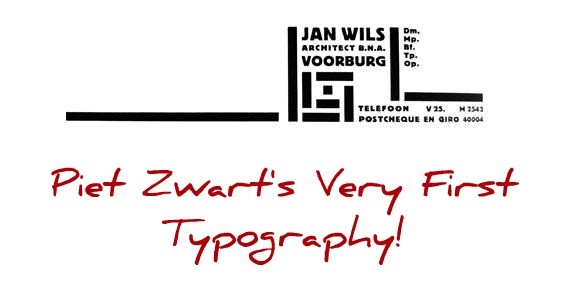
Piet’s energy and vision to come up with unique styles has been widely appreciated by some prominent speakers. One such statement popped up during a workshop at MIT:
Zwart was able to manipulate the oblique perspective in such a way that space was not only activated but made to seem irrational in order to heighten the viewer’s experience of what would otherwise have been an ordinary rectangular room. ~ The Omega Workshop by Judith Collins.
Piet smartly tagged himself as a typotect which he said was a perfect blend of typographer and architect.
Surprisingly enough Piet wasn’t aware of the difference between lower case and upper case during his early years with typography. While working with Nerderlandsche Kabelfabriek (NKF) at Delft he realized how little he knew about printing. He learned the basics of printing from an 18-year old worker in the printing firm where NKF adverts were printed.
The Book of PTT
This is one of the most talked about projects of his life. It was the year 1930 when Piet was approached for the design of “The Book of PTT” which taught school children the basics of Dutch postal service. Piet wanted to tickle the kids imagination with his design and this is clearly visible in the final book design.
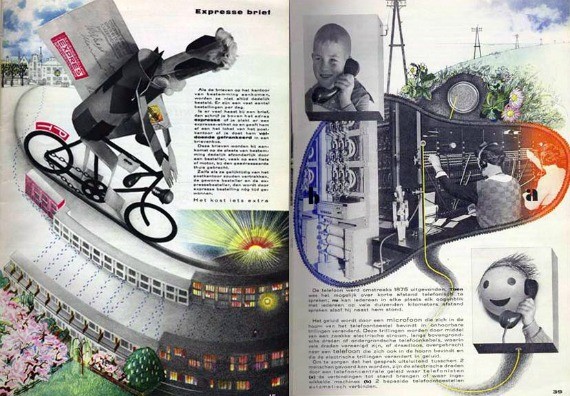
His major goal was to fill the book with bright colors as it was targeting children. He thought deeply and came up with two brand ambassadors for his book: ‘The Post’ and ‘J. Self’. Piet created two dolls with these names and took pictures of these dolls. Later on he used pencil and colors to edit these photos. Piet worked hard for years on this book and it was finally launched in the year 1938.
One must understand that it wasn’t easy to come up with such a concept during those old days and this was the reason why Piet Zwart took extra time to finally complete his piece of art.
In Closing
Piet left this world at the age of 92. It was the year 1977 when Piet moved on to design some other world. The Piet Zwart Institute in Rotterdam is named after Piet himself. He used to teach in this school in 1920. As is the case, he was awarded (Association of Dutch Designers) with the title Designer of the Century in the year 2000 long after his death. Though Piet is now no more on this beautiful plane, his work and his genius continues to come up every now and then on various occasions.
That rounds up this article. We hope that you found something interesting to you. If so please share it and of course comment below.
This post may contain affiliate links. See our disclosure about affiliate links here.



